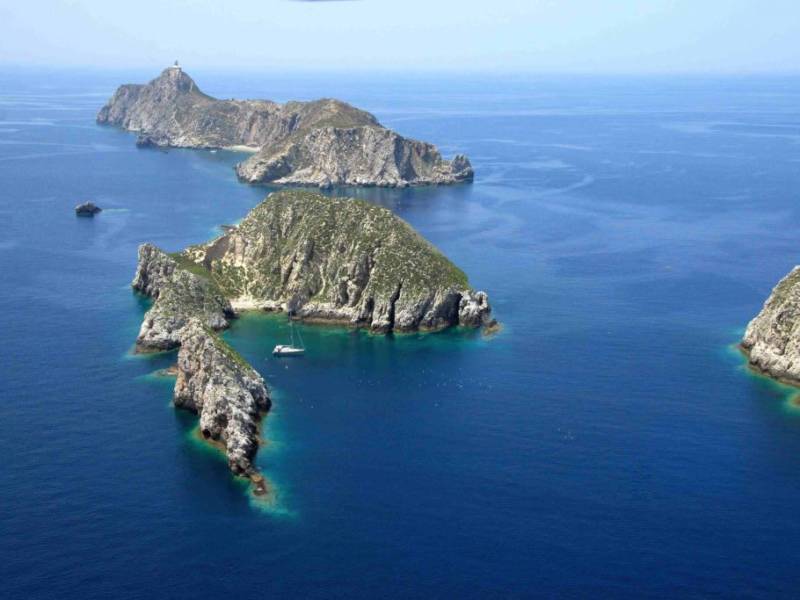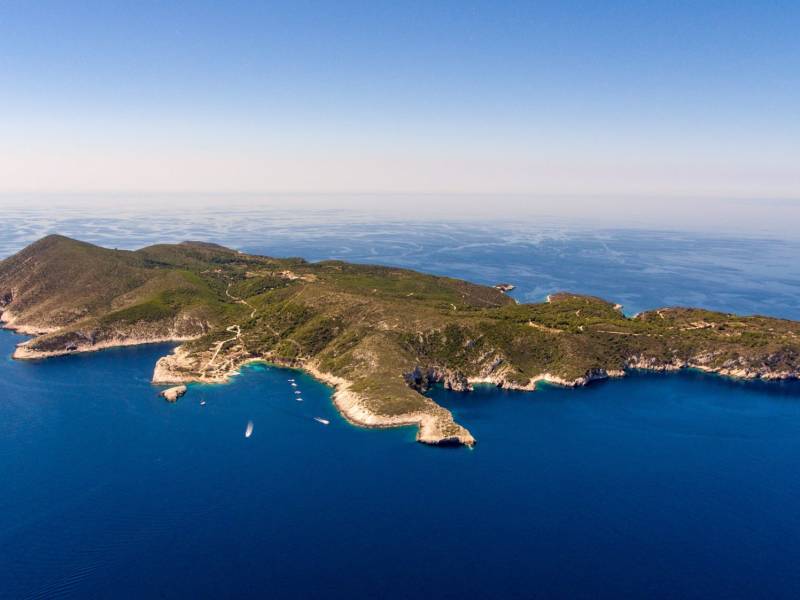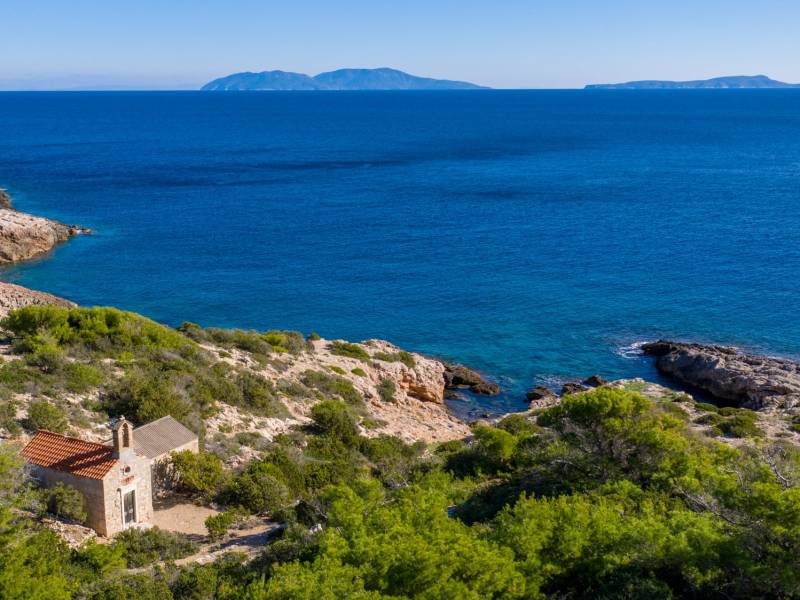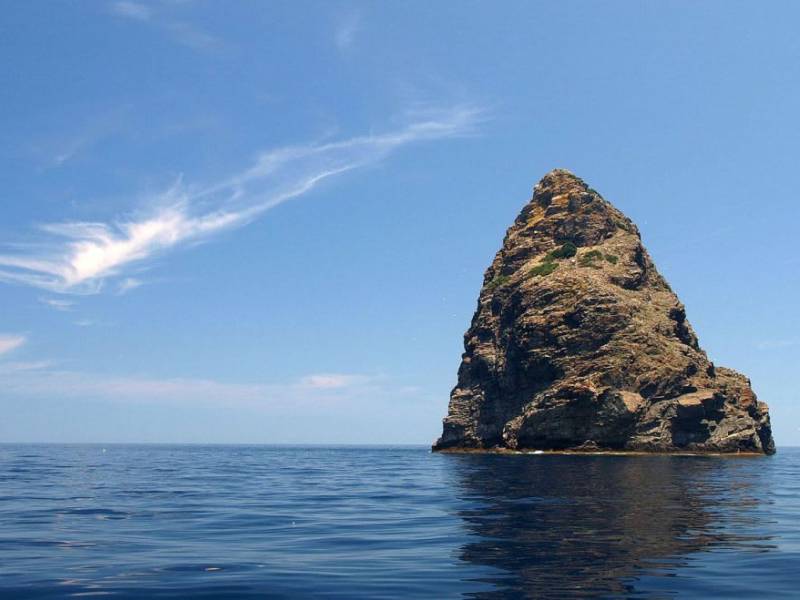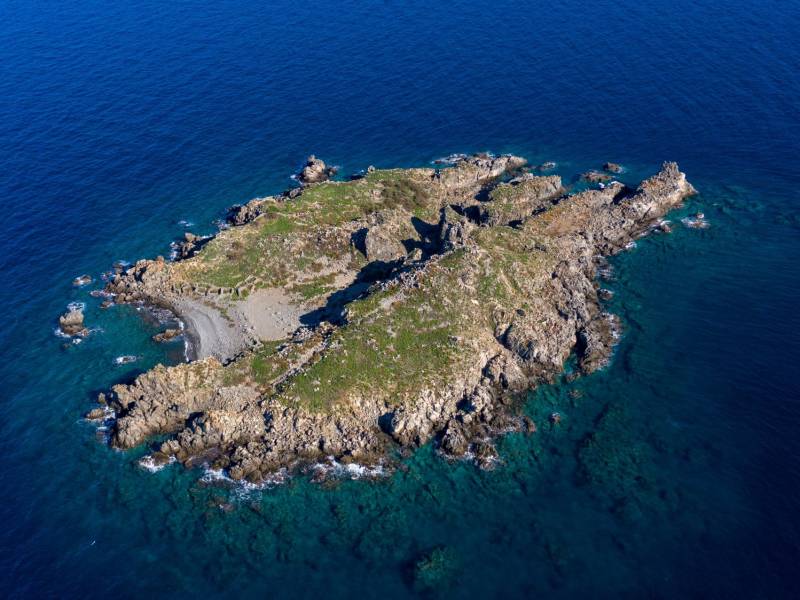Svetac (Saint Andrew)
Fourteen nautical miles west of Komiža, in the middle of the open sea, lies Svetac or Sveti Andrija – an island of rugged cliffs and legends, once lively and inhabited, and today silent and deserted. With an area of 4.6 km² and no natural harbor, it has always been inaccessible, but it is precisely this wild inaccessibility that makes it special. Tin Ujević described it in his 1930 travelogue Teuta’s Palace as “the last edge of the Adriatic”.
Svetac has been inhabited since prehistoric times. In Roman times, an important shipping route passed through here, and legend has it that the Illyrian queen Teuta built a fortress on its heights, which is why the island is sometimes called Teuta’s. From the 11th to the 15th centuries, Benedictines lived here, and their church of St. Andrew still stands on the southern slopes today. In the second half of the 18th century, the Zanchi family (now Zanki) from Italy moved to the island, producing resin for Venetian shipyards. Their descendants are still connected to Svetac.
Life on the island has always been difficult. The sea is rich in fish, but unpredictable and dangerous; winds could lift rocks, and the cliffs hid numerous accidents and shipwrecks. Children were once lowered down steep cliffs to hunt seabirds, terns, and falcons, so that something more than fish could be on the table. Svetac had its largest population in 1952 – 72.
The island's natural uniqueness is as impressive as its history. Svetac, along with Brusnik and Jabuk, is part of UNESCO's global network of geoparks. It is known for its rare bird colonies, endemic plants, and as many as 28 caves, some of which shimmer with blue, such as the famous Blue Cave on Biševo.
At the beginning of the 20th century, the Zanki family built several large stone houses on Svec for a dozen families, after previously living in caves themselves. Today, their windows are only opened occasionally, mostly in the summer, when one of their descendants comes to pick capers, tend to the vineyard, or guide a rare visitor through the island's desert. In winter, when the sea closes off the approaches and the winds take over the island, only the hardiest remain on Svec – a few donkeys and cats, silent guardians of the solitude on the last edge of the Adriatic.
Audio guides available in:Hrvatski, English (British), Italiano
